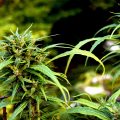The following is a facts sheet we assembled on the issue of medical marijuana some months ago. You can download it here.
Marijuana is a Schedule I Controlled Substance
Marijuana is on the list of Schedule I controlled substances. Congress created this list in the 1970s to regulate the use and abuse of drugs in America. Schedule I substances are substances that carry a high risk of abuse, have little or no known medical value, and are illegal to possess, use or distribute.
Schedule I substances are regulated by the federal Drug Enforcement Administration, not the Food and Drug Administration. They cannot be used in clinical testing, except under very strict guidelines and supervision from the DEA. Congress and the DEA are the only government entities that can change the laws governing the use of marijuana.
Problems with Marijuana as a Medicine
The fact that marijuana is a Schedule I controlled substance means that the FDA cannot oversee the use of marijuana as a medicine. As a result, there are no FDA guidelines governing the distribution, dosing, and use of marijuana the way there are for other pharmaceuticals. This has caused the FDA to express concerns over “medical marijuana”. Three of those concerns are:
- Lack of research: As a Schedule I substance, marijuana has not been thoroughly researched to determine its exact health benefits and side-effects. In other words, using medical marijuana right now would be like using a medicine that has not been thoroughly tested and approved by the medical community.
- Consistency: Because marijuana is a plant, its quality and potency can vary from crop-to-crop. This means that 1 gram of marijuana purchased from one grower may not contain the same level of active ingredients as 1 gram purchased from another grower. This varies the drug’s effectiveness in treating illness and the degree to which users experience side-effects.
- Smoking: Smoking marijuana poses health risks similar to smoking tobacco. There is little documentation on the risks of lung cancer associated with smoking marijuana, but marijuana’s classification as a Schedule I substance makes it difficult for such studies to be conducted. Even though there are other ways to administer marijuana, smoking is likely to remain a popular method among medical marijuana users.
The FDA has also expressed concerns about the shelf life of marijuana.
Legal Problems with Medical Marijuana
State law cannot trump federal law. States that legalize marijuana for medicinal use cannot change the fact that marijuana is an illegal substance under federal law. Only Congress or the DEA can change that.
As a result, a person could comply perfectly with a state law legalizing medical marijuana, but still go to prison under the federal laws that govern it.
A More Appropriate Solution
If the medical community is serious about determining the health benefits of marijuana, they should lobby Congress and the DEA to reschedule marijuana so that clinical tests may be conducted. This is the current opinion of the American Medical Association.
Cannabinoids are the active chemicals found in marijuana. If testing reveals that those cannabinoids can be used to treat illness, the medical community might develop a method to extract the cannabinoids and deliver them in safe, effective doses under the supervision of the FDA.
Theoretically, the marijuana plant could be treated the same way as the opium plant: As a Schedule II substance that carries a high risk of abuse, but has some medical uses. That decision, ultimately, lies with the medical community and Congress.
Facts Sheet
- Lung Cancer: Research shows marijuana smoke carries 50%-70% more tar and carcinogens than tobacco smoke.[1]
- Mental Incapacitation: Marijuana’s effects on memory and cognitive functions can last for days after the initial effects have worn off[2]. As a result, a person who uses marijuana on a regular basis may chronically operate at a less than ideal mental level[3].
- Depression: A 2007 study indicated that it is difficult to properly prescribe marijuana and cannabinoids when treating depression, and that improper doses can increase depression rather than decrease it[4].
- Mental Illness: A 2005 federal report revealed that children who use marijuana before age 12 were twice as likely to develop serious mental illness as those who did not try the drug until they were 18[5].
- Short-Term Health Effects: Short-term health effects of marijuana use have been shown to include increased heart rate, breathing rate, and blood pressure; slowed reaction time; distorted sense of time; short-term memory loss; paranoia; anxiety; and depression[6].
- Withdrawal: Users who become dependent on marijuana may experience a number of negative side effects if they choose to quit using it, including depression, anxiety, aggression, and decreased appetite[7].
- Abuse of Prescription Drugs: Research indicates growing trends in the use and abuse of prescription drugs over illicit drugs[8]. Given marijuana’s popularity as a recreational drug, there is reason to assume it could be much more commonly abused than other prescription drugs if it becomes legally available.
- Synthetic Cannabinoids: Currently, synthetic forms of THC—the primary cannabinoid found in marijuana—are available by prescription[9]. Those who support the legalization of marijuana for medical use argue THC is not the only beneficial cannabinoid found in marijuana. That argument might be verified or refuted through medical research if marijuana were rescheduled by Congress or the DEA.
[2] Pope HG, Gruber AJ, Hudson JI, Huestis MA, Yurgelun-Todd D. Neuropsychological performance in long-term cannabis users. Arch Gen Psychiatry 58(10):909–915, 2001.


